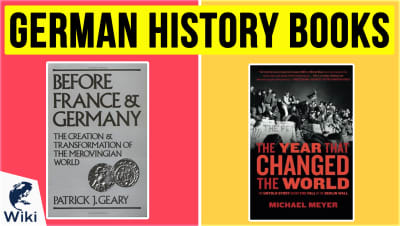10 Ideas For Your Next Trip To Washington, D.C.
There's no shortage of things to do in the nation's capital, but you may not want to spend every moment surrounded by tourists at big monuments and museums. To get to know the culture of the District of Columbia a little better, here are ten places to visit that will make your next trip memorable and comfortable. This video was made with Ezvid Wikimaker.
10 Spots to Check Out in Washington, D.C.
| Destination | Features |
|---|---|
| The Hay-Adams | Historic luxury hotel with impressive views, high-end dining, and full-service event venues |
| District Wharf | Mile-long waterfront stretch of the Potomac River with restaurants, retailers, residences, and businesses |
| Capitol Hill Hotel | Comfortable accommodations in the perfect location for visiting landmarks like the U.S. Capitol Building, the National Mall and the Library of Congress |
| Mount Vernon Triangle | Growing mixed-use downtown neighborhood with historic buildings, quality restaurants, and a diverse array of cultural influences |
| The National Bonsai and Penjing Museum | Supported by the National Bonsai Foundation and U.S. National Arboretum, this free museum introduces guests to bonsai, penjing, and related art forms |
| Blue Duck Tavern | Award-winning restaurant offering a market-based menu featuring local farms and purveyors, located in the Park Hyatt Washington D.C. |
| Morrison House | Hotel in the Old Town neighborhood of Alexandria, VA, built in the style of a Federalist mansion |
| Georgetown | Famous neighborhood known for its history and attractions like the C&O Canal, Georgetown University, & The Old Stone House, the oldest standing building in Washington |
| CIRCA Bistros | Restaurant with multiple locations throughout the D.C. area, offering seasonal menus and an extensive list of wine, beer, and cocktails |
| Ronald Reagan Building and International Trade Center | The largest structure in the city and the first and only federal building dedicated to both government and private use, houses a premier conference and event center, executive office space, retail and dining, and offers community entertainment and programming |
The Georgetown GLOW 2019 Event
9 Suspenseful Thrillers Set in Washington, D.C.
The Ronald Reagan Building and International Trade Center
In Depth
The capital of the United States, Washington D.C. has much to offer visitors. It's not just gray bureaucracy and government business. Inside the Beltway, a vibrant community and fascinating activities await. This list, presented in no particular order, explores opportunities for tourists in the Federal City.
At #1, The Hay-Adams is a luxury hotel located in downtown Washington D.C., offering panoramic views of the White House, Lafayette Square, and St. John's Church. Originally designed and built as a residential hotel in the 1920s, it is one of the oldest such lodging venues in the city and includes 124 upscale guest rooms and 21 deluxe suites. It was named after distinguished early residents, statesman John Hay and historian Henry Adams, descendant of the nation's second president.
Top of the Hay, the hotel's rooftop event venue, houses a full-service kitchen and hosts corporate gatherings, board meetings, and social occasions. The Hay-Adams is a popular site for weddings, with a variety of rooms available in different packages. In-house restaurant The Lafayette boasts a light-filled dining room and a menu with high-end American cuisine. Management promises a commitment to the environment and a green hotel experience.
Management promises a commitment to the environment and a green hotel experience.
In the #2 slot, The Wharf neighborhood is a miles-long stretch along the Potomac River that connects D.C. to its waterfront. It features restaurants, retailers, residences, and businesses, as well as views of the water and what developers and boosters describe as a vibrant culture. The area has a rich history, dating back to precolonial times and including the country's oldest continuously operating fish market.
The Wharf maintains a lively events calendar and is home to a number of nightclubs, concert venues, and bars. There are activities for kids, such as oversized games, ice skating, and bocce courts. The wide variety of restaurants in the neighborhood includes those serving Spanish cuisine, Caribbean food, Mexican, and dessert, among many other styles. There are many shops, such as a neighborhood outlet of the Politics and Prose bookstore.
#3 on the list is Capitol Hill Hotel. It's located among 19th-century row houses, within walking distance of major landmarks like the US Capitol Building, the National Mall, and the Library of Congress. The hotel's accommodations are spread across two buildings: the West House, containing the front desk, library, gym, and business center, and its counterpart on the east wing, which features meeting spaces and a lounge that serves a Continental breakfast buffet.
It's located among 19th-century row houses, within walking distance of major landmarks like the US Capitol Building, the National Mall, and the Library of Congress.
The Capitol Hill Hotel is made up of more than 150 rooms and suites. Options range from the spacious One Bedroom Suite with full kitchen to the cozy Accessible Queen guestroom with roll-in shower, about the size of a studio apartment. In addition to housing tourists, families, and business people for short trips, the hotel can be booked for extended stays, whether by those in town for internships, new arrivals to the city, or itinerant executives.
For #4, we've got Mount Vernon Triangle, a Business Improvement District carved out by developers to promote the interests of area property owners. Located in the center of the city, its boundaries include 17 blocks within the east end of downtown Washington D.C., bordered by 7th Street to the west, Massachusetts Avenue to the south, New York Avenue to the north and New Jersey Ave to the east.
In the nineteenth century, the area was known as the Northern Liberties, a moniker given to areas that were beyond the limits of the city. Redevelopment and branding efforts commenced in the early 2000s. Today the neighborhood includes a number of upscale apartment buildings and touts a variety of retail and hospitality businesses to lure visitors both from within the city and from farther away.
Today the neighborhood includes a number of upscale apartment buildings and touts a variety of retail and hospitality businesses to lure visitors both from within the city and from farther away.
The #5 entry is the National Bonsai Foundation, which preserves the history, protects the legacy, and prepares the future of this plant-based art. The group maintains The National Bonsai and Penjing Museum, the world's first such institution. Free and open to the public, the museum maintains a large permanent collection, with works from Japan, China, and North America.
The museum also displays viewing stones, an art form related to bonsai that typically suggests an aspect of the natural landscape, such as a distant mountain or a waterfall. The grounds feature a selection of pavilions, courtyards, and gardens in which visitors can enjoy and appreciate the outdoors in a handsomely manicured setting. Readers of Washington City Paper have voted the museum D.C.'s "Best Place to Take an Out-of-Towner."
The #6 spot is held by Blue Duck Tavern, a restaurant located in the Park Hyatt Washington D.C. luxury hotel in the city's Georgetown neighborhood. The kitchen, overseen by director of culinary and food and beverage operations Jean-Claude Plihon, aims to provide simple, rustic food with an artisan's approach. The atmosphere is contemporary American, marked by wooden tables and touches of dark oak and blue burlap.
The kitchen, overseen by director of culinary and food and beverage operations Jean-Claude Plihon, aims to provide simple, rustic food with an artisan's approach.
Blue Duck Tavern serves breakfast, brunch, lunch, and dinner. Menu items include a signature cheeseburger, prepared with aged cheddar, red onion, and bread and butter pickles on a brioche bun; a heritage grain salad that provides a healthy spin on hoppin john; and a hand-made vegetable pot pie. There is also a full dessert menu with selections provided by pastry chef Colleen Murphy.
At #7, it's Morrison House, a high-end hotel overlooking the Potomac River waterfront in Alexandria, Virginia, just twenty minutes outside the heart of the nation's capital. Part of Marriott's Autograph Collection, the hotel occupies a Federalist mansion that matches the surrounding historic Old Town neighborhood. Its amenities include laundry service, pet-friendly accommodations, and a 24-hour concierge.
Morrison House features 45 guest rooms, each with a literary theme. Styles include the Illustrator's, lower-level garden studios with hardwood floors and large glass standing showers; the Author's, located on the higher floors, and offering a view of the historic neighborhood; and the Editor's, large corner rooms with oversized workspace. The spacious Publisher's Suites offer 388 square feet of accommodation.
The spacious Publisher's Suites offer 388 square feet of accommodation.
For #8, we've got the neighborhood of Georgetown. It was originally established as a tobacco port town in Maryland, and housed a lumber yard, cement works, and the Washington Flour Mill. In 1967, Georgetown was designated a National Historic Landmark. Demographics have changed over the years due to a complicated history, but its past is commemorated with the African American Heritage Trail.
Other area tourist opportunities include the Kennedy Walking Tour, retracing the memories of John F. and Jacqueline Kennedy. Blues Alley is the oldest continuously-operated jazz supper club in America, and is both a locally recognized landmark and an international jazz icon. Georgetown is additionally home to a host of iconic movie locations, including sites featured in The Exorcist, St. Elmo's Fire, The American President, and Dave.
Coming in at #9, Circa is a small chain of neighborhood bistros in the greater D.C. area, with locations in Clarendon, Virginia; Foggy Bottom; Chinatown; and Navy Yard. The brand is run by Metropolitan Hospitality Group, which maintains a handful of other mid-market eateries in the area. Circa aims to cultivate a warm and inviting environment with an energized social scene.
Circa aims to cultivate a warm and inviting environment with an energized social scene.
The restaurant's menu offers small plates, such as fried calamari; salads, like the vegetable and quinoa bowl; entrees like seared scallops; as well as sandwiches, including a signature burger, and a selection of flatbreads. Circa's extensive drinks list comprises an array of cocktails, as well as white and red wine, plus beer on draft and bottled.
Wrapping up our list at #10, the Ronald Reagan Building and International Trade Center is the largest structure in Washington D.C., at 3.1 million square feet. Owned by the U.S. General Services Administration and operated by a for-profit corporation, it's the only federal building dedicated to both government and private use, and is mandated by Congress to put the public purse to work in creating a national forum to promote trade.
For visitors, there are an array of attractions and amenities, such as bas-reliefs of Presidents Ronald Reagan and Woodrow Wilson, and a large section of the Berlin Wall. Free guided tours of the building are offered throughout the week. Both the Ronald Reagan Building and International Trade Center and its outdoor plaza host a number of large events, from weddings to trade shows to concerts.

























